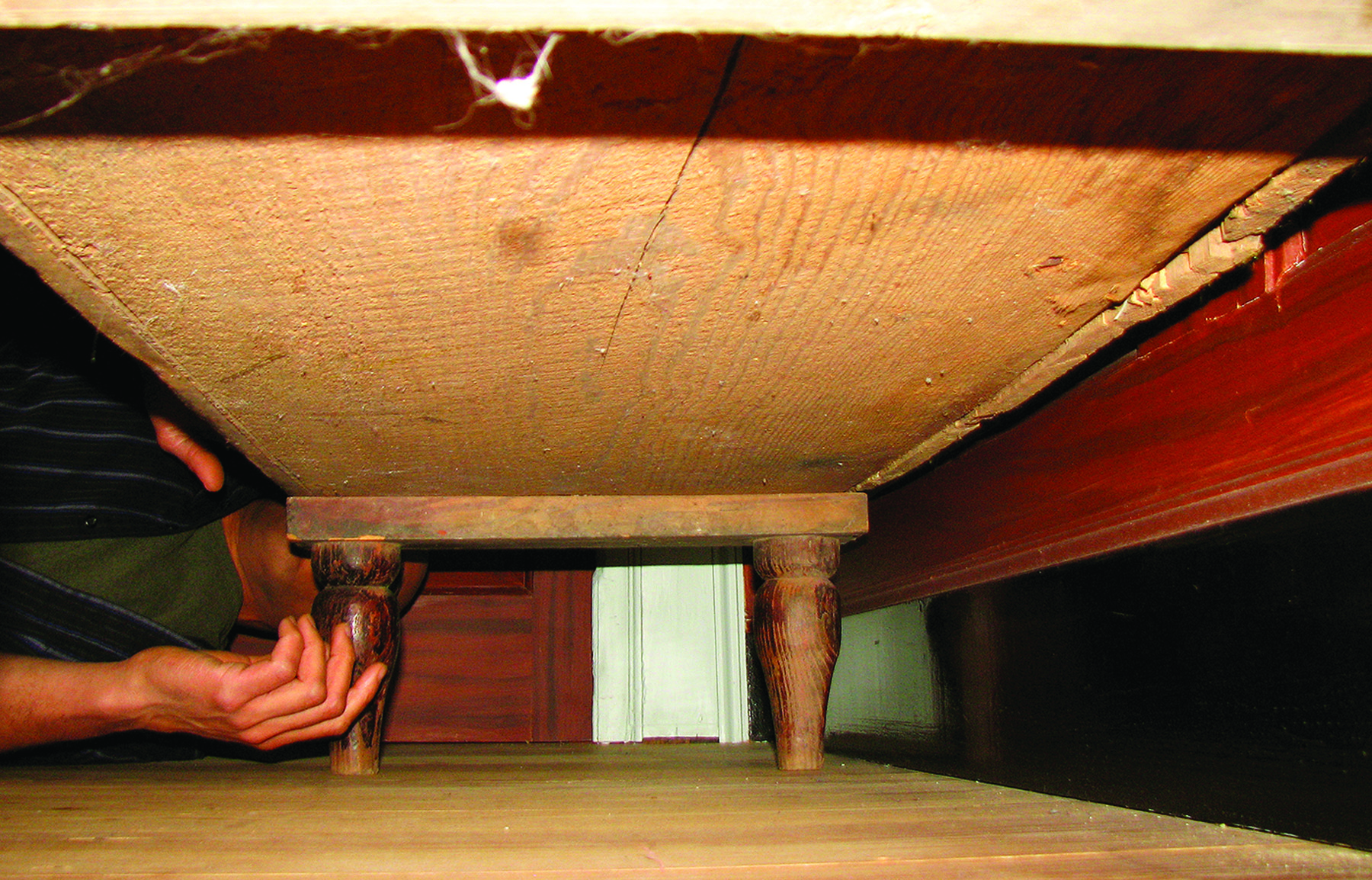We may receive a commission when you use our affiliate links. However, this does not impact our recommendations.

A peek below. A look underneath can reveal important details. Or another furniture nerd (here, Jerome Bias).
If anyone ever sees that, they’re looking too closely.
I spend a lot of time looking at antique furniture, often from below. My interest is pieces made about 100 years ago, from the Arts & Crafts period of the early 20th century. I share a passion with those who collect these pieces, but I look at them with a different eye. The lines and proportions draw me in, and I appreciate the rarity and value. But my mind isn’t on the dollar value of any particular piece; I’m out to connect with the guy who made it way back when.
On tours of old houses I hold up the group by crawling under things for a closer look. At museums I set off alarms by getting too close or reaching out to touch when the guard is distracted. My fascination is with how these things go together, and I wonder what constraints of time, money and resources the original maker had to contend with. It’s a reality check against the overload of information in print and online. It’s one thing to read about how things should be done and quite another to look at the tangible legacy of someone’s work.
My favorite moments are when I discover something that only a woodworker would recognize, details that fly over the head of the collector or curator. Building furniture involves compromise; the material and tools don’t always cooperate, and the mind of the cabinetmaker isn’t always as sharp as his chisels.
We strive for perfection, but when it escapes us we have decisions to make. As we build, each part becomes more valuable. Each dovetail, mortise or tenon cut in a piece of wood is an investment of time. When things don’t work out, a painful choice must be made: Scrap the investment and start over or try to fix it so no one will know?
I’m no stranger to those choices, and when I look at old work I don’t search for flaws, but now and then I come across one. Recently I was lying on the floor, pointing my camera up to record how a drawer was built and how it slid in and out of a cabinet. On my way out from under, I noticed a bump in a back leg, just below where a side rail connected. I took a closer look and realized what I was seeing.
On this piece, a side panel sat in a groove in the square leg. Below the panel, a rail joined the leg with a tenon. The mortise is in the groove, a deeper portion at the end. The bump I saw was in line with the panel, and I knew that the original builder had made a classic woodworking mistake.
The groove has to stop so that it doesn’t show, but it’s easy to lose track of where to stop when milling the groove and go too far. I’ve done it, and I’ve been faced with that same dilemma another cabinetmaker faced a century ago: Throw out the leg, or try to make an invisible patch?
He chose to patch, and I can’t find fault with him for putting it in. The leg below the rail is in a shadow, and the grain and color of the patch matched the leg. What gave it away was wood movement. The leg had shrunk or the patch had swelled. Below the rail was a neat, rectangular area a few inches long that just broke the surface of the leg. I wondered if he had cussed and thrown something or just quietly looked for a matching piece of scrap.
I stepped back and looked at the patch from a normal point of view and I couldn’t see it. I crouched down for a closer look, and again the repair was lost in the shadow. I could feel it if I ran my hand in just the right place, but it wasn’t visible unless my head was near the floor.
We tend to idealize craftsmen of the past, but I think I admire the man more for finding evidence of his lapse and the execution of his repair. None of us is perfect, and the discovery of this kind of thing makes a better connection to workers of the past than absolutely perfect work.
There’s a chance that I’m the only person to ever spot this repair. I’m sure that it ruined the man’s day and he likely worried about what would happen if it were seen. In the end, it’s a small flaw in a hidden location in what is considered to be a masterpiece. Its presence makes sense to me, and if the original maker and I were to meet through time-travel or some other cosmic happenstance, I would shake his hand and say, “That’s OK brother, your secret is safe with me.”
Here are some supplies and tools we find essential in our everyday work around the shop. We may receive a commission from sales referred by our links; however, we have carefully selected these products for their usefulness and quality.








